Professional Paper Writing
Professional Paper Writing
1. Report Paper: summarize and report the findings of the author on a particular subject.
2. Research Paper: assemble facts and ideas and by studying them to draw new conclusions as to facts or interpretations, or to present the material in the light of a new interest.
3. Course Paper: refer to the paper written after a specific course is learned or at the end of the term.
4. Thesis Paper (Dissertation): written and submitted in partial fulfillments of the requirements for the degree of MA or MS (or Ph.D) in a specific discipline.
Writing a Professional Paper: 5 Steps
Step 1: Searching for good ideas
Step 2: Finding topics
Step 3: Considering audience and purpose
Step 4: Moving from brainstorming to drafting
Step 5: Editing and refining
Styles of Professional Paper Writing
Formal:
More serious approach to a subject.
Relate everything to his readers objectively and systematically
Ruling out slang or dialectic expressions or colloquialisms or informal contractions
Little use of the first and second persons like “ I”, “you” Make little effort to appeal to his emotions
Title(题目)
Generalizing the text: summarize the central idea of the paper concisely and correctly
Attracting readers
Using more nouns, noun phrases and gerunds
Using incomplete sentence
Being brief and concise
Being specific
Avoiding questions titles
Being standard
Sample Analysis
“On Learning Foreign Language and Cultural Background Teaching”
“On Foreign Language Learning and Cultural Background
Teaching” (Good)
“Developing Computer Internet and the Spread of Culture and Information”
“The Development of Computer Internet and Spread of Culture and Information” (Good)
“Is Literature Useless in TOEFL?”
“Literature Useless in TOEFL” (Good)
Author
Bearing author’s responsibility
Facilitating retrieval and correspondence
Rule of spelling: WANG Wei
Printing format unified
Number of authors: not over 4 writers
Professional title omitted: professor, president, chief manager, doctor
Address:
Linguistic Features(语言特色)
Nominalization: keywords in the form of nouns, not verbs
Specifically concentrated meaning: use single word of a specific meaning, not verbal phrase (absorb – take in; discover- find out)
Abstract(摘要)
Miniaturizing the text: condensed statement of the contents of a paper
Limited Length:
200 words the maximum for a long report or paper; Never more than 500 words.
3-5% of the length of the paper
Descriptive (Indicative) Abstract: state the general subject matter of the document the follows
Informational (Informative) Abstract:
Highlight the findings and results, briefly and quantitatively,
A condensed version of the research paper.
Informational-indicative Abstract: a combined form that bears specific information about the principal findings and results
and general information about the rest of the document.
Complete Content:
Statement of the problem;
Statement of the approach to solving the problem; The principal result
Formalized Structure
1. Topic Sentence: go straightforwardly to the subject or problem and indicate the primary objectives of the paper Ex. The paper present a simple prescription for..
The purpose of the paper is…
In this paper, we aim at…
2. Supporting Sentences: further specify the subject to be presented; taken as a main body of an abstract
Ex. The theory is characterized by…
Detailed information has been acquired by the authors using…
Special mention is given here to…
3. Concluding Sentence(s): analyze the results, explain the application, point out the significance of the research Ex. In conclusion, we state that…
The studies we have performed showed that… Finally, a summary is given of…
4. Writing Requirements
Integrity(完整)
Concise(简要)
Consistency(连贯)
Concentration(浓缩)
5. Five Steps for Writing
Step 1: Underlining key words and sentences
Step 2: Listing essential points of the paper
Step 3: Boiling down each section to a sentence or two Step 4: Drafting the abstract
Step 5: Checking the final draft
6. Five-Answer Strategy
Q1: What is the general knowledge of your topic in the academic field?
Q2: What research topic is the paper to focus on?
Q3: What method or material do you use to support your main point of view?
Q4: What conclusion will you draw?
Q5: What is the main contribution of the paper?
A1 to Q1 (one sentence)
A2 to Q2 (one topic sentence, one or two supporting sentences)
A3 to Q3 (two or three sentences to give specific information)
A4 to Q4 (one sentence)
A5 to Q5 (one sentence)
Sample
(Q1) This paper compares East and West (American and Chinese) campaign practices and reveals the prominence(重要性) of culture and its impacts upon the operation of public communication campaigns. (Q2)Specifically, this comparative study shows that, Chinese and American campaign practices differ in (1) ideologies(意识形态)and perceptions(理解力);
(2) approaches and strategies; and (3) implementations(执行) and evaluations(评价). (Q4) In running the campaigns, Americans rely heavily on mass media and concentrate on short-term goals, whereas Chinese depends more on interpersonal(人际)influences and primarily on ling-term social effects. (Q5) These differences in campaign practices are however attributable to(归因于)their respective(各自)cultural orientations.
7. Likely Mistakes / Common Errors
Mixed writing style
In this paper, .. the non-national firms can very cheap……… In this way, the competitive ability of……..
This paper will explores ………………………….
Over-simplified Statements
Monotonous Expression
The influence of……Some …….
A practical construction ……In this paper, the stone……., a necessary ……………………..
Incomplete Contents
Displacement of Information
第二篇:Writing a Research Paper
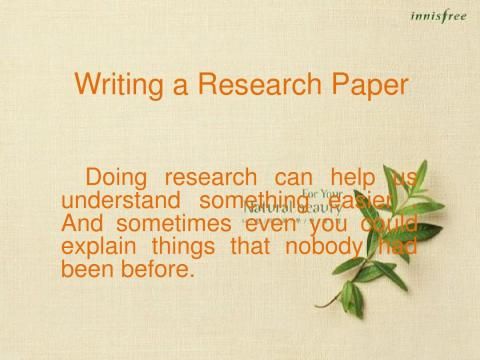
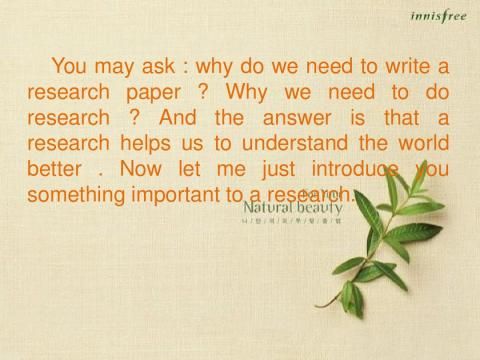
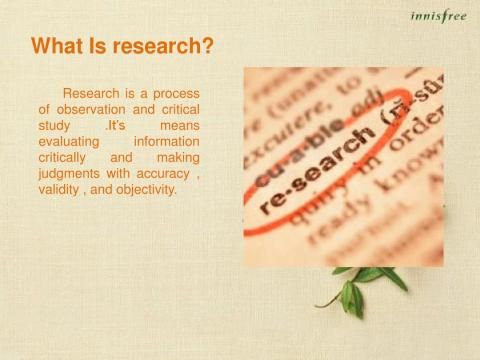
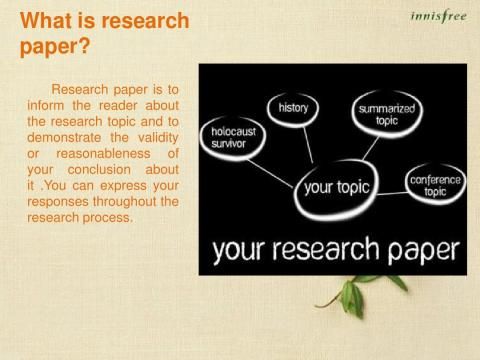
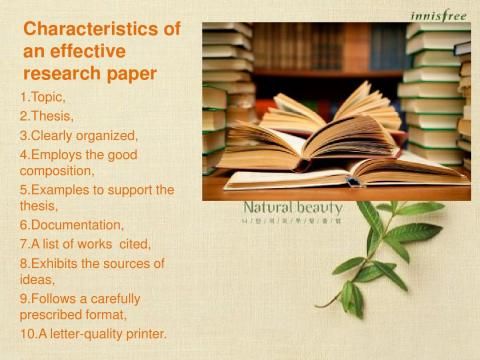
-
符合英文写作习惯的Statement of purpose个人陈述范例
Statementofpurpose本文经修改后作者的学习目的和选择学校的原因显得很清晰明确十分令人信服对比原作者提供的中文稿和专…
-
Statement of Purpose(ce)
StatementofPurposeCivilEngineeringSOPStatementofPurposeCivilEngineeringSOPI…
-
PS (Personal Statement) 和SP (Statement of Purpose)的写作精髓
PSPersonalStatement和SPStatementofPurpose的写作精髓我想说的是经过这次一对一边改边交流我的重…
-
怎样写一份成功的personal statement~
转以下是第三方论点里面对PS很有帮助本人一直认为硕士申请过程中两个主观方面的努力是最重要的1根据自己的情况实事求是因人制宜选择适合…
-
Personal Statement个人陈述
IamathinkerbutnotonetothinkoutloudIlovemyselfbutamnotinlovewiththesoundofmy…
-
工作文件 Working_Paper
工作文件WorkingPaper定义在会议进行到一定程度后结合各国现阶段立场由一国或几国写的文件工作文件大多是针对会议上遇到的某一…
-
Research paper
LuxiLiuCompositionampRhetoric1301120720xxDietandHealthThefoodchoiceswemakec…
-
模拟联合国Position Paper范例(标准格式)
PositionPaperDelegateHanJingdaSchoolHighSchoolAttachedtoNortheastNormalUniv…
-
论文架构 Research Paper
论文架构ResearchPaper1选题2查阅资料将选题具体化3收集资料并整理作笔记或卡片4开题报告5撰写任务书6提纲起草论文文献…
-
format of a research paper introduction论文的标准格式
WritingaResearchPaperIntroductionAstepbystepreferenceTheintroductionisthefi…